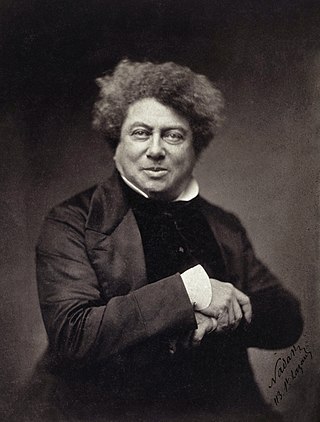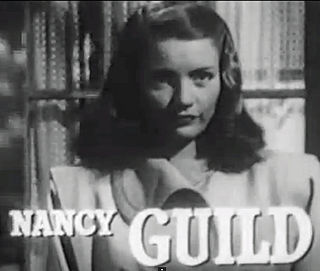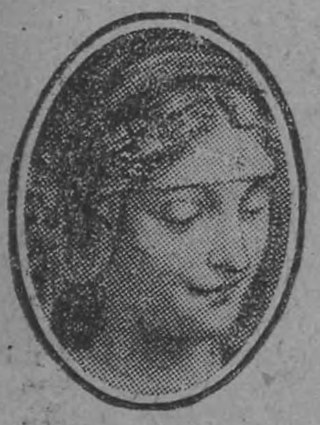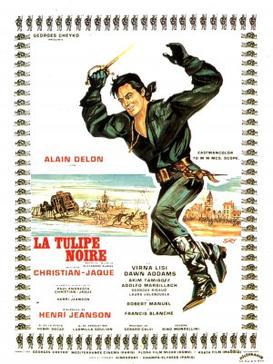
George Orson Welles was an American director, actor, writer, producer, and magician who is remembered for his innovative work in film, radio, and theatre. He is considered to be among the greatest and most influential filmmakers of all time.

Touch of Evil is a 1958 American film noir written and directed by Orson Welles, who also stars in the film. The screenplay was loosely based on the contemporary Whit Masterson novel Badge of Evil (1956). The cast included Charlton Heston, Janet Leigh, Joseph Calleia, Akim Tamiroff and Marlene Dietrich.

Alexandre Dumas, 24 July 1802 – 5 December 1870), also known as Alexandre Dumas père, was a French novelist and playwright.

Giuseppe Balsamo, known by the alias Count Alessandro di Cagliostro, was an Italian occultist.

The Affair of the Diamond Necklace was an incident from 1784 to 1785 at the court of King Louis XVI of France that involved his wife, Queen Marie Antoinette.

This Gun for Hire is a 1942 American film noir crime film directed by Frank Tuttle and starring Veronica Lake, Robert Preston, Laird Cregar, and Alan Ladd. It is based on the 1936 novel A Gun for Sale by Graham Greene.

Nancy Joan Guild was an American film actress of the 1940s and 1950s. She appeared in Somewhere in the Night (1946), The Brasher Doubloon (1947), and the comedy Abbott and Costello Meet the Invisible Man (1951). Although appearing in major films, Guild never achieved as much fame at 20th Century Fox, the studio that had signed her to a seven-year contract, as she had hoped, and eventually stopped acting.
Black magic refers to evil supernatural magic.

Start the Revolution Without Me is a 1970 British-French-American period comedy film directed by Bud Yorkin and starring Gene Wilder, Donald Sutherland, Hugh Griffith, Jack MacGowran, Billie Whitelaw, Orson Welles and Victor Spinetti. The comedy is set in revolutionary France where two peasants are mistaken for the famous Corsican Brothers. The film is considered a parody of a number of works of historical fiction about the French Revolution and French history in general, including A Tale of Two Cities (1859) by Charles Dickens and two works by Alexandre Dumas, The Corsican Brothers (1844) and The Man in the Iron Mask (1847).

Gregory Ratoff was a Russian-born American film director, actor and producer. As an actor, he was best known for his role as producer "Max Fabian" in All About Eve (1950).

Josephine Balsamo is a fictional character who is the best known antagonist of Arsène Lupin, the notorious gentleman burglar created by Maurice Leblanc.

Auguste Maquet was a French author, best known as the chief collaborator of French novelist Alexandre Dumas, père, co-writing such works as The Count of Monte Cristo and The Three Musketeers.

Royal Affairs in Versailles is a 1954 French-Italian historical drama directed by Sacha Guitry. Described as "a historical film showing Versailles from its beginnings to the present day", it tells some episodes through portrayal of the personalities who lived in the Palace of Versailles. Its sister films are Napoléon (1955) and If Paris Were Told to Us (1956).

Prince of Foxes is a 1949 American historical adventure film adapted from Samuel Shellabarger's novel Prince of Foxes. The movie starred Tyrone Power as Orsini and Orson Welles as Cesare Borgia. It was nominated for two Oscars during the 22nd Academy Awards: Best Black and White Cinematography and Best Costume Design, Black and White.

The Corsican Brothers is a 1941 swashbuckler film starring Douglas Fairbanks Jr. in a dual role as the titular conjoined twins who are separated at birth and raised in entirely different circumstances. Both thirst for revenge against the man who killed their parents, both fall in love with the same woman. The story is very loosely based on the 1844 novella Les frères Corses by French writer Alexandre Dumas, père.
Don Quixote is an unfinished film project written, co-produced and directed by Orson Welles. Principal photography took place between 1957 and 1969. Test footage was filmed as early as 1955, second-unit photography was done as late as 1972, and Welles was working on the film intermittently until his death in 1985. The film was eventually edited by Jesús Franco and was released in 1992, to mixed reviews.

The Black Tulip is a French-Italian-Spanish film which reused some names in the novel of the same title by Alexandre Dumas but its story does not follow the novel. It is, essentially, a star vehicle for the popular French actor Alain Delon.

Anchise Brizzi was an Italian cinematographer.

The Prince of Thieves is a 1948 American adventure film nominally inspired by Alexandre Dumas' 1872 novel Le Prince des voleurs. Produced by Sam Katzman for Columbia Pictures and starring Jon Hall as Robin Hood with stuntwork by Jock Mahoney, the film was shot in the Cinecolor process that features an inability to reproduce the colour green. Sequences were shot reusing several of the sets of Columbia's The Bandit of Sherwood Forest and at Corriganville. Patricia Morison and Adele Jergens co-star.
Giorgio Papi (1917–2002) was an Italian film producer and production manager.

















